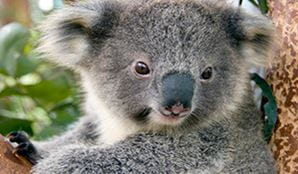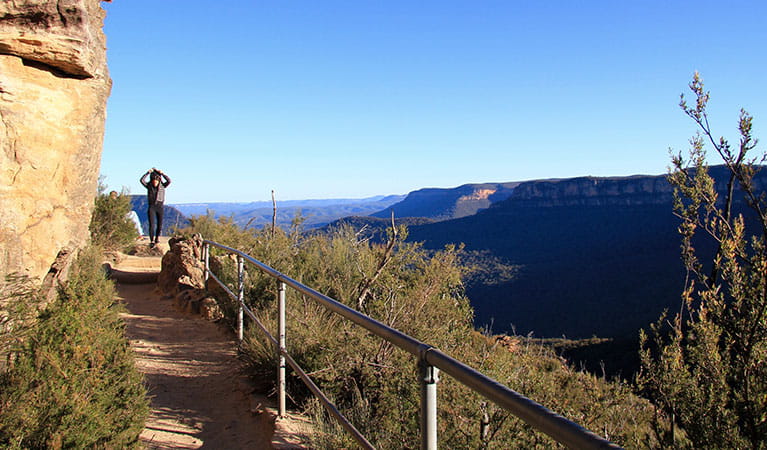Prince Henry Cliff walk bushcare
Katoomba area in Blue Mountains National Park
Overview
Volunteer with the Prince Henry Cliff Walk bushcare group to help restore native threatened-species habitat in the world-renowned Blue Mountains National Park. Meet like-minded people, learn about special plants and animals, take in magnificent views and enjoy morning tea with the group.
- Work
- Bush regeneration, weed and pest management
- When
1st Sunday and 1st Wednesday each month, 9.30am–12.30pm.
- Grade
- Medium
The iconic Prince Henry Cliff walk in Blue Mountains National Park is located on the edge of a spectacular escarpment with sweeping views of the Greater Blue Mountains Area World Heritage Property. This volunteer bushcare group manages the weeds creeping their way through the creeks that flow from Katoomba and Leura.
Help us remove weeds and restore the native threatened-species habitat by weeding and planting. You will learn about the plants and animals that call this beautiful national park home and enjoy a spot of morning tea while you lend a helping hand.
Remember to wear long sleeves and long trousers (preferably cotton drill) and be prepared for uneven terrain and varying weather conditions.
Find out more about volunteering with us
Saving Our Species program
Australia is home to more than 500,000 animal and plant species, many of which are found nowhere else in the world. Saving our Species is a statewide conservation program that addresses the growing number of Australian animals and Australian native plants facing extinction.

Park info
- in the Katoomba area of Blue Mountains National Park in the Sydney and surrounds region
Katoomba area is always open but some locations may close at times due to maintenance, poor weather or fire danger.
What's nearby:
Things to do (121)
- 4WD touring (2)
- Aboriginal culture (7)
- Adventure sports (13)
- Birdwatching and wildlife encounters (9)
- Cafes and kiosks (2)
- Cycling (8)
- Environmental appreciation/study (3)
- Historic heritage (9)
- Other experiences (7)
- Photography (3)
- Picnics and barbecues (9)
- Road trips and car/bus tours (3)
- Sightseeing (61)
- Swimming (2)
- Visitor centres (1)
- Walking (63)
- Waterfalls (41)
- Wildflowers (seasonal) (3)


